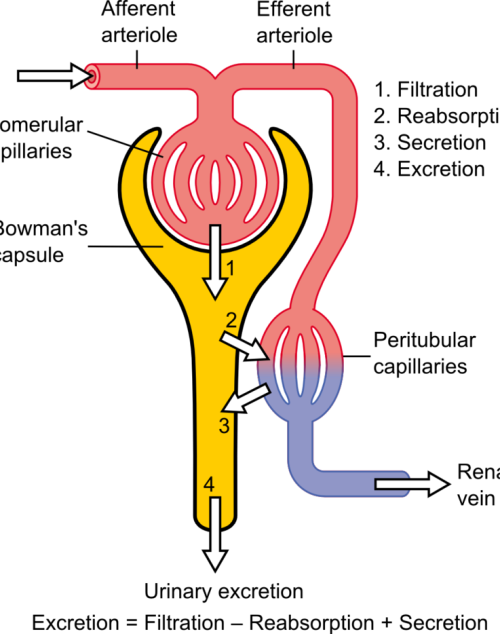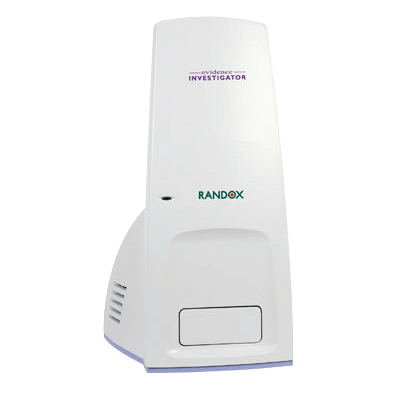Acute Kidney Injury and Antimicrobial Stewardship
Acute Kidney Injury and Antimicrobial Stewardship
An estimated 1 in 5 hospital admissions in the UK is associated with acute kidney injury1, providing a clear illustration of the need for novel, rapid detection methods. Our latest whitepaper looks at this common condition and the links between Acute Kidney Injury and Antimicrobial Stewardship. For more details on the things discussed in this article, you can download the full whitepaper below.
Acute Kidney Injury
Acute Kidney Injury is defined as a sudden loss of kidney function. This causes a disruption in the kidneys’ ability to filter waste out of your blood resulting in an accumulation of waste products as well as other imbalances.
The loss of kidney function is the result of a sudden reduction in glomerular filtration rate (GFR), the process through which waste is extracted from the blood and is often reversible2.
Aetiology of Acute Kidney Injury
The differential pressure existing between the glomerulus and Bowman’s is the driving mechanism for glomerular filtration2. This pressure contrast is influenced by the combined resistances of the afferent (leading to the glomerulus) and efferent (leading away from the glomerulus) vascular pathways in the kidney. Under normal kidney function, these resistances are in equilibrium, facilitating the proper functioning of the GFR. For example, an increase in efferent resistance restricts the blood flow out of the kidney, elevating pressure inside the kidney and reducing GFR, and vice versa2. However, in AKI, the decline in renal blood flow and GFR has a pathological origin. The pathophysiology of AKI can be classified as prerenal, intrinsic renal, or postrenal.

Pre-renal Acute Kidney Injury
Pre-renal AKI is caused by reduced afferent blood flow or, in other words, increased afferent resistance. While tubular and glomerular functions generally remain intact, pre-renal AKI may be caused by systemic hypoperfusion (decreased blood flow) or selective hypoperfusion to the kidney, caused by renal artery stenosis or aortic dissection3.
Intrinsic Renal Acute Kidney Injury
Renal AKI describes the conditions which affect the glomerulus or tubule, for example, acute tubular necrosis and acute interstitial nephritis. This collection of conditions is associated with vasoconstrictor expression in renal afferent pathways2.
Post-renal Acute Kidney Injury
Post-renal AKI usually results from an obstruction in the filtration system. Causes of obstruction include kidney stones, tumours, or blood clots, commonly in the bladder outlet. Obstruction affecting one side might not invariably lead to acute kidney injury, especially when the impediment develops slowly, such as with tumour growth. This is because the unaffected kidney might be able to adjust and make up for the compromised functionality3
Symptoms & Treatment
AKI often manifests with decreased urine output as its primary symptom. However, additional symptoms, when present, can encompass fatigue, nausea, vomiting, or confusion4. To achieve an accurate diagnosis, a comprehensive review of the patient’s medical history and a physical examination are essential to identify the underlying cause of the condition.
The treatment and management of AKI are contingent upon the root cause of the condition. In milder cases, measures are implemented to maintain appropriate levels of fluid, electrolytes, and blood pressure. Nutritional support may also be administered when necessary. In the most severe instances of AKI, dialysis may be warranted to compensate for the diminished kidney function5.
Creatinine serves as a valuable diagnostic tool for evaluating renal conditions, including kidney health, GFR, and muscular dystrophy. However, abnormal serum creatinine (SCr) levels only become evident when a significant portion of the renal mass is compromised. The kidneys possess an impressive capacity to adapt to reduced function, which means that a considerable loss of function or GFR is necessary to influence SCr levels. This poses a challenge when it comes to early detection of AKI6.
Novel biomarkers, KIM-1, NGAL, Clusterin, and Cystatin C, are associated with AKI2 and can be analysed through molecular testing. These new methods can provide a fast and accurate assessment of an individual’s kidney health, at a much earlier stage than SCr quantification2.
Antimicrobial Stewardship
Antimicrobial Stewardship (AMS) programs are specifically crafted to enhance the efficiency of antimicrobial utilization, curtail the emergence of Antimicrobiasl Resistance (AMR), and enhance patient outcomes7. These programs encompass a variety of approaches, such as educational initiatives, training, the establishment of guidelines and protocols, ongoing monitoring and feedback regarding antimicrobial usage, and the management of antimicrobial formularies. Through the promotion of prudent antibiotic utilization, AMS programs contribute to the safeguarding of the efficacy of currently available antimicrobial agents and the deceleration of AMR development7.
Antibiotics and Acute Kidney Injury
Various antibiotics are associated with the progression of AKI due to their nephrotoxicity which can cause severe damage to the kidneys. These antibiotics include polymyxins, aminoglycosides and the commonly used, vancomycin8.

Randox Renal Injury Detection
Using the patented Biochip Technology, the Randox Acute Kidney Injury (AKI) array, available on the Evidence Investigator, simultaneously tests for four novel biomarkers (KIM-1, NGAL, Clusterin, Cystatin C) delivering an early diagnosis and monitoring of treatment efficacy. Multiplex testing better captures reduced renal function, as each biomarker reflects different mechanisms that result in similar injury outputs, allowing for a more accurate picture of the underlying cause of AKI. Along with being able to identify AKI at a much earlier stage, this array provides an accurate and sensitive solution for the diagnosis and monitoring of AKI.
If you’d like some more information on the Randox Acute Kidney Injury Array or would like to add this technology to your laboratory, take a look at our website at https://www.randox.com/acute-kidney-injury/ or get in touch today at marketing@randox.com.

References
- NICE. How common is it? Acute Kidney Injury . Published July 2023. Accessed October 2, 2023. https://cks.nice.org.uk/topics/acute-kidney-injury/background-information/prevalence/
- Adiyanti SS, Loho T. Acute Kidney Injury (AKI) Biomarker.; 2012.
- Manzoor H, Bhatt H. Prerenal Kidney Failure.; 2023.
- NHS. Acute Kidney Injury. NHS. Published 2023. Accessed July 31, 2023. https://www.nhs.uk/conditions/acute-kidney-injury/
- Goyal A, Daneshpajouhnejad P, Hashmi M, Bashir K. Acute Kidney Injury . In: StatPearls [Internet]. StatPearls Publishing ; 2023.
- Rule AD, Lieske JC. The estimated glomerular filtration rate as a test for chronic kidney disease: Problems and solutions. Cleve Clin J Med. 2011;78(3):186-188. doi:10.3949/ccjm.78a.11004
- Baur D, Gladstone BP, Burkert F, et al. Effect of antibiotic stewardship on the incidence of infection and colonisation with antibiotic-resistant bacteria and Clostridium difficile infection: a systematic review and meta-analysis. Lancet Infect Dis. 2017;17(9):990-1001. doi:10.1016/S1473-3099(17)30325-0
- Clifford KM, Selby AR, Reveles KR, et al. The Risk and Clinical Implications of Antibiotic-Associated Acute Kidney Injury: A Review of the Clinical Data for Agents with Signals from the Food and Drug Administration’s Adverse Event Reporting System (FAERS) Database. Antibiotics. 2022;11(10):1367. doi:10.3390/antibiotics11101367
National Cholesterol Month
National Cholesterol Month
Foe or Friend? Your Health is your Wealth.

It’s National Cholesterol Month, time to raise awareness on the dangers high cholesterol can have on your body and the strain it can have on your precious heart, the centre piece and vital organ that keeps you alive and pumps blood to every corner of your body.
Cardiovascular disease is the leading killer, claiming 17.9 million lives globally each year. 80% of these are due to strokes and heart attacks. Its not too late to get checked out and to alter your lifestyle habits.
Randox Laboratories provides a comprehensive range of reagents for Cardiovascular disease with sdLDL providing detailed testing of cholesterol levels and overall Cardiovascular Health, see more in the blog below.
Cholesterol can be a friend, but it can also be a foe. Maybe you associate bad cholesterol with the result of being overweight, this is not always the case, without a balanced diet, essential exercise, you are at risk of being in the cholesterol danger zone.
Small dense Low-Density Lipoprotein (sdLDL) carries cholesterol to and from cells in the body, it is one of two proteins. However, it is more atherogenic than LDL cholesterol meaning it has a higher tendency to leave fatty deposits in the blood and has a greater ability to block arteries.
Low-density lipoprotein (LDL) is key for progression and development of cardiovascular disease and plague build up (atherosclerosis). LDL has a couple of subclasses sdLDL being one, making it a more reliable marker for the discovery and testing of cardiovascular issues.

sdLDL has a significantly greater atherogenic potential than LDL sub-group. This makes the portion of sdLDL a better marker to predict cardiovascular disease and issues than LDL. It provides a greater understanding of lipoprotein risk within patients; it is more comprehensive in detecting cardiovascular risk in comparison to the original LDL-C test. It is a valuable screening tool in allowing to detect for diseases and abnormalities in the cardiovascular system. As sdLDL-C is particularly atherogenic, a person with elevated sdLDL-C levels has a 3-fold increased risk of myocardial infarction.
Randox provides the “only direct automated sdLDL-C kit on the market, The Randox sdLDL-C ‘Ex-Seiken’ test is a direct method for the quantitative determination of sdLDL-C using automated chemistry analysers, capable of accommodating two-reagent assays. The assay consists of two steps and is based on the use of well-characterised surfactants and enzymes that selectively react with certain groups of lipoproteins.”
Benefits include,
- Direct, automated test for convenience and efficiency
- Rapid analysis results can be produced in as little as ten minutes, facilitating faster patient diagnosis and treatment plan implementation.
- Good correlation to the gold standard ultracentrifugation method
- Liquid ready-to-use reagents for convenience and ease of use
- Applications available detailing instrument specific settings for a wide range of analysers
- Clearance method sdLDL-C controls and calibrator available.
Foe or Friend? Your Health is your Wealth.
References
Fernandez-Alvarez R, Gonzalez-Rodriguez AP, Gonzalez E, Rubio-Castro A, Dominguez-Iglesias F, et al. Serum Ferritin as Prognostic Marker in Classical Hodgkin Lymphoma Treated With ABVD-based Therapy. Leukemia & Lymphoma . 2015;56(11):3096-3102.
Randox (2023) Ferritin: Reagents, Randox Laboratories. Available at: https://www.randox.com/ferritin/ (Accessed: 20 September 2023).
Rosário C, Zandman-Goddard G, Meyron-Holtz EG, D’Cruz DP, Shoenfeld Y. The hyperferritinemic syndrome: macrophage activation syndrome, Still’s disease, septic shock and catastrophic antiphospholipid syndrome. BMC Medicine . 2013;11(185).
Sharma J, Sharma R. A prognostic marker in patients with sepsis in pediatric age group: A prospective cohort study. International Journal of Medical and Health Research . 2018;4(3):86-89.
The Royal College of Pathologists. Guidance on the Use and Interpretation of Clinical Biochemistry Tests in Patients with COVID-19 Infection.; 2020. Accessed September 18, 2023. https://www.rcpath.org/uploads/assets/3f1048e5-22ea-4bda-953af20671771524/G217-RCPath-guidance-on-use-and-interpretation-of-clinical-biochemistry-tests-in-patients-with-COVID-19-infection.pdf
World Health Organisation. WHO Guideline on Use of Ferritin Concentrations to Assess Iron Status in Individuals and Populations.; 2020. Accessed September 18, 2023. https://www.who.int/publications/i/item/9789240000124

